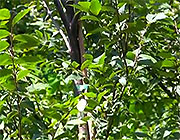
FRIDAY, May 3 (HealthDay News) — Molecules emitted by trees interact with man-made air pollution and create tiny particles that can get lodged in the lungs, potentially leading to lung cancer and asthma, researchers suggest.
Trees produce and emit isoprene, a molecule that protects leaves from oxygen damage and temperature fluctuation. But after isoprene is chemically altered by exposure to the sun, it reacts with pollutants called nitrogen oxides to create the tiny harmful particles, called fine particulate matter, scientists discovered. Nitrogen oxides are emitted by vehicles, aircraft, coal plants and other sources.
The study was published in a recent online issue of the journal Proceedings of the National Academy of Sciences.
“The work presents a dramatic new wrinkle in the arguments for reducing man-made pollutants worldwide,” study author Jason Surratt, an assistant professor of environmental sciences and engineering at the University of North Carolina at Chapel Hill, said in a university news release.
“Isoprene evolved to protect trees and plants, but because of the presence of nitrogen oxides, it is involved in producing this negative effect on health and the environment,” Surratt said.
“We certainly can’t cut down all the trees, but we can work on reducing these man-made emissions to cut down the production of fine particulate matter,” he added.
Understanding how this process works will help researchers better predict air quality and climate effects, which can lead to improved regulations that affect the public and the environment, the study authors suggested.
“We observe nature’s quirks, but we must always consider that our actions do have repercussions,” Surratt said. “It’s the interaction between these natural and man-made emissions that produces this air pollution, smog and fine particulate matter — and now we know one reason for how it happens.”
More information
The World Health Organization has more about air quality and health.

